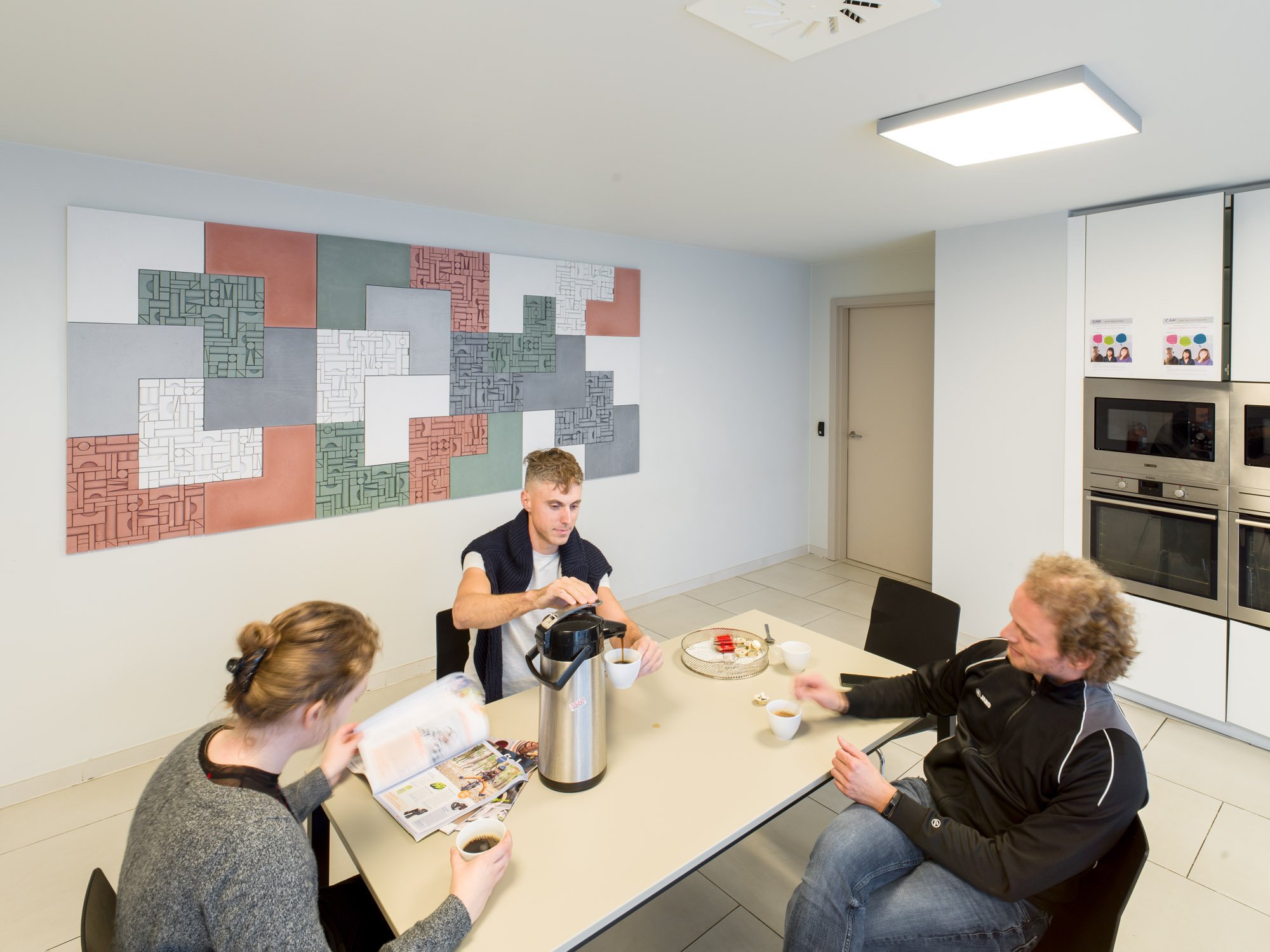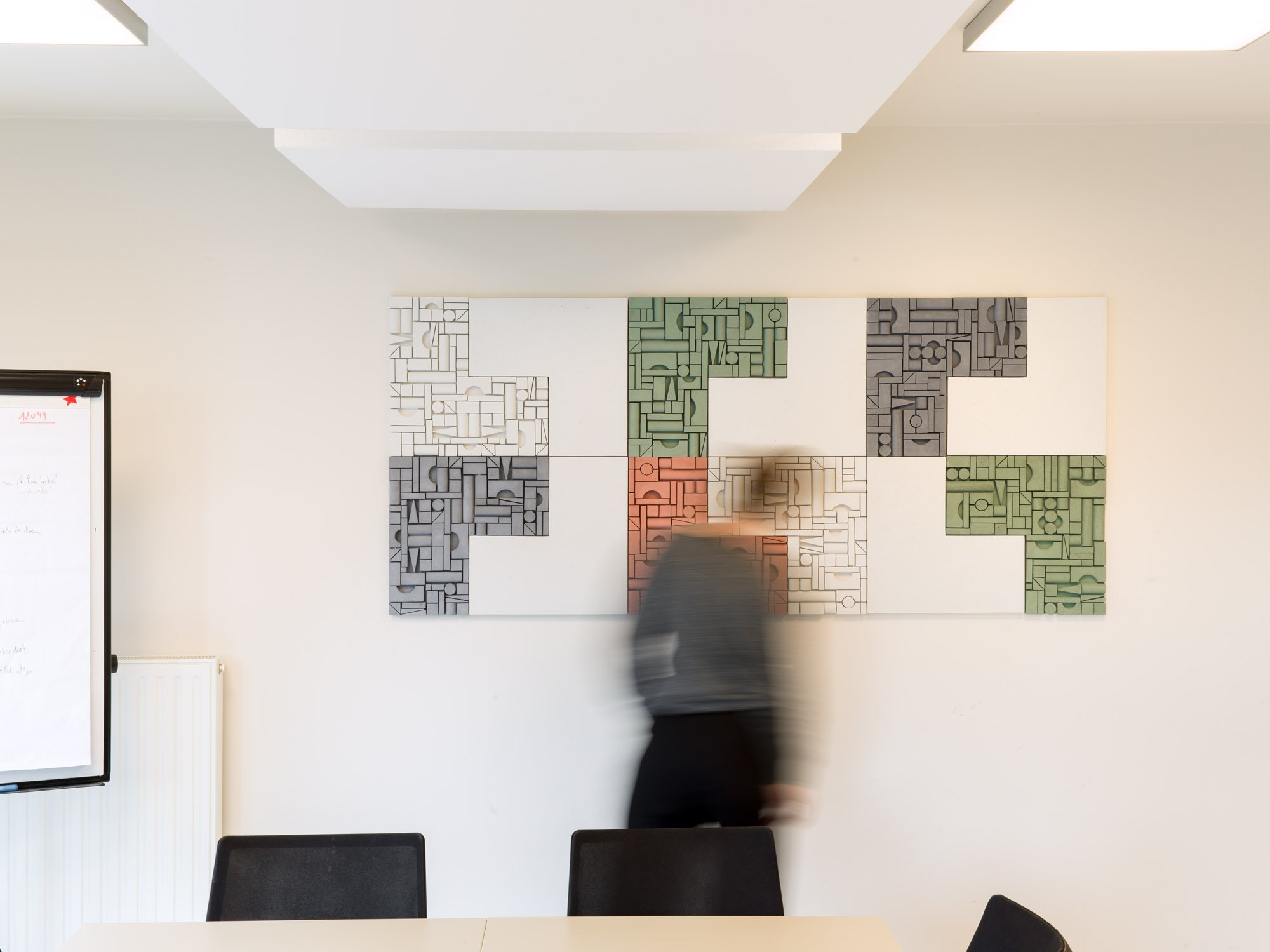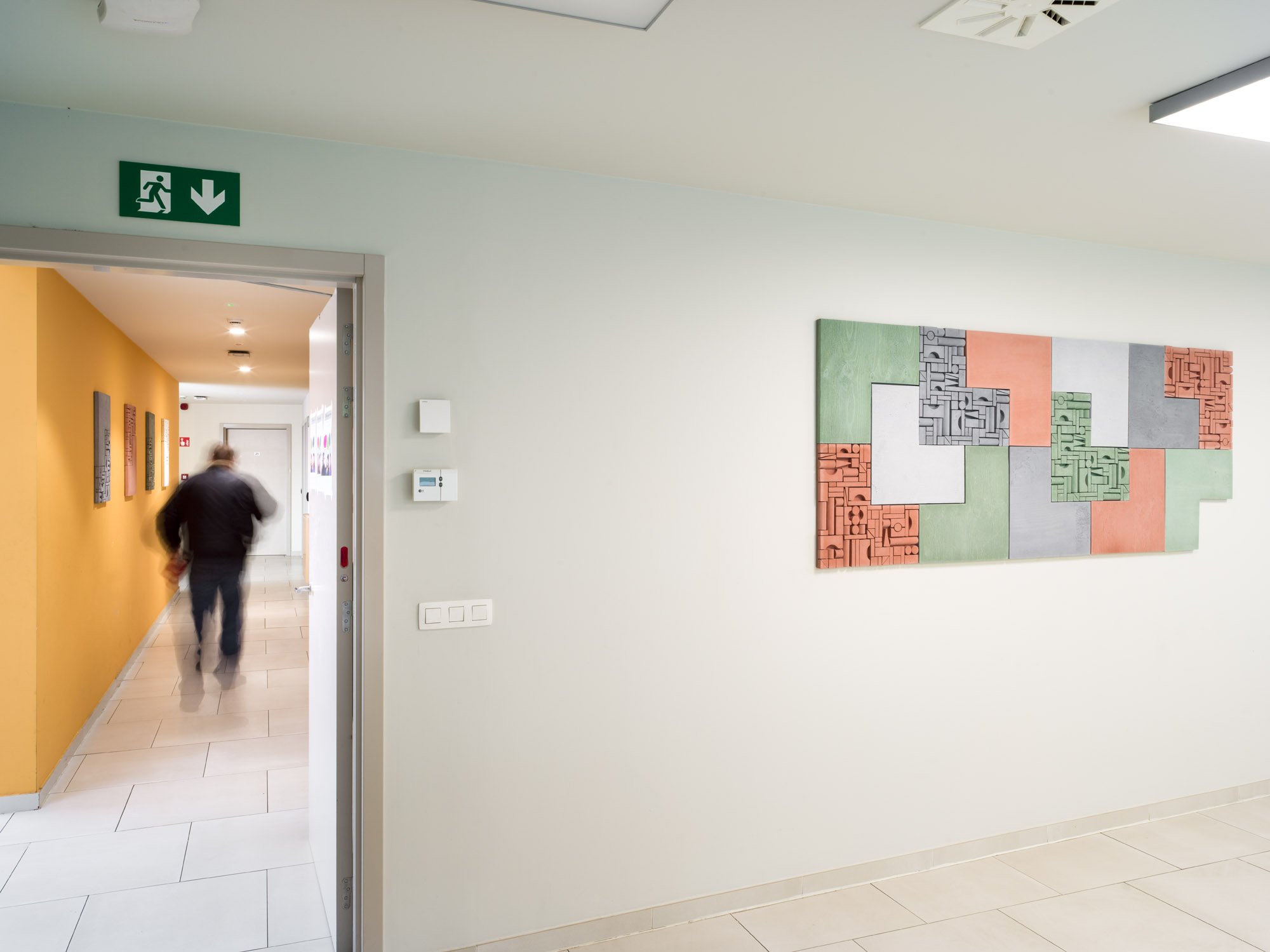Click here to discover all the photos.
In December 2020 I was awarded the commission to integrate a permanent artwork in the Homeless shelter t’Eilandje in Ghent. An independent jury selected my concept out of multiple proposals.
During a workshop in June 2021, both residents and employees of t’Eilandje got the opportunity to make their own composition in wooden blocks. All these designs were integrated in the final concrete compositions. The workshop also served to introduce the architectural qualities of the blocks. Referring to hieroglyphs, runes and even emoticons, participants were encouraged to create a specific composition that symbolizes themselves. Following this creative process, the artwork was completed and installed in October 2021.
The work consists of 100 concrete bas-reliefs in 5 different colours that were placed throughout the building. They consist of two categories: 40 elements that show a composition of toy blocks and 60 solid elements. Both types subtly show the wood grain of the wood that was used to cast the concrete reliefs. All elements (the toy block compositions and the solid elements) have an identical L-shape, so they can be combined endlessly.
I chose to install the reliefs either alone or combined to form small to large murals. These murals can be found throughout the whole building, on the walls of the meeting rooms, stairwells, the shared kitchens and hallways – each in their own, unique configuration. Some compositions are displayed in plain sight, while others are hidden in more subtle places – to accidentally be discovered as one explores the building.
The basic block set that is used has 15 different types of blocks: from a cube to cylinders of different heights, two types of bridges and a prism. During the workshop I introduced the participants into the architectural qualities of the blocks and led them through varied examples in which the forms are reflected – from Middle Eastern architecture, Gothic and Romanesque buildings to modernist buildings and contemporary design. But more importantly we mainly talked about our lives, its problems and our aspirations.
The different parts of the work were installed throughout the entire building, like a tree is grounded by a network of roots. The work connects the different functions and spaces of the shelter and the people within it, with a connected fabric of shapes and colours. By choosing this spread out distribution I tried to consciously avoid the compelling character of a singular monumental artwork. It is only by wandering through the different spaces that the inhabitants evolve from casual passers-by to spectators bringing together the totality of the integrated artwork.
This integrated artwork can be experienced in different ways. For example, because of its geometric arrangement, the repetition of recognizable shapes and the soft colour palette, it can create tranquillity and atmosphere in a space – consciously or unconsciously. One doesn’t have to actively look and interpret to give the work meaning. However, those who want to enter into a dialogue with the work are given the space for different interactions with the varied, separate 'satellites' throughout the building. Each composition can evoke individual questions and experiences in the viewer and stimulates him or her to explore further. The different compositions thus function as landmarks within the building, both functionally and psychologically.
The bas-reliefs made with toy blocks are universally recognizable. However, they are clearly not parts that actually have been used in a stack of a playing child. They reflect the potential of the game rather than the actual game. Just like the wooden blocks used to come in a cart with a slide, the concrete version captures just that moment when the slide is pulled open and neatly stacked blocks appear. A moment of anticipation arises, when all possibilities are revealed.
The recognizability of the basic toy block shapes appeals and evokes memories, but at the same time points to the possibilities of the future. The blocks refer to the building blocks of our civilization and everyone's personal story. Only by building, or by rebuilding, we can develop ourselves. Only by getting started, we can continue to build and grow. The compositions expose the basis and highlight the possibilities that are at hand. They make us reflect on our childhood, but at the same time also highlight the foundations of our adult life and the opportunities that exist.
The work invites to reflect on what was, but above all on what can be.
Click here to discover all the photos.


